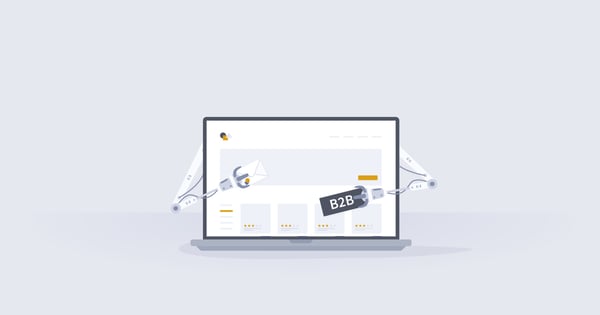Over half of B2B companies (53 percent) currently use marketing automation technology in some capacity. And an additional 37 percent plan on implementing it in the near future.
This means B2B marketing automation is part of the game plan for 90 percent of companies. And that’s awesome. But here’s the thing. Using it doesn’t always go according to plan, and many companies fail to get the ROI they hoped for.
For this post, I’m going to highlight the most legit B2B automation strategies that can be potential game-changers. Ones that have been vetted and that can help you improve all phases of your digital marketing, along with real-life examples of them in action.

What Is B2B Marketing Automation?
B2B marketing automation is an affordable and scalable way of streamlining your marketing efforts by outsourcing repetitive tasks. From email marketing to social media to even ad campaigns, marketing automation reduces human error and as a result, improves a marketing team’s efficiency.
5 B2B Marketing Automation Strategies You Can Try Today
3. Chatbots for Answering Lead Questions and Directing Them to Relevant Resources
1. Lead Scoring
If you’re unfamiliar, lead scoring is a point-based system where you quantify the value of a lead, which is determined by engagement factors like pages visited, content downloaded, and emails opened. It looks something like this.
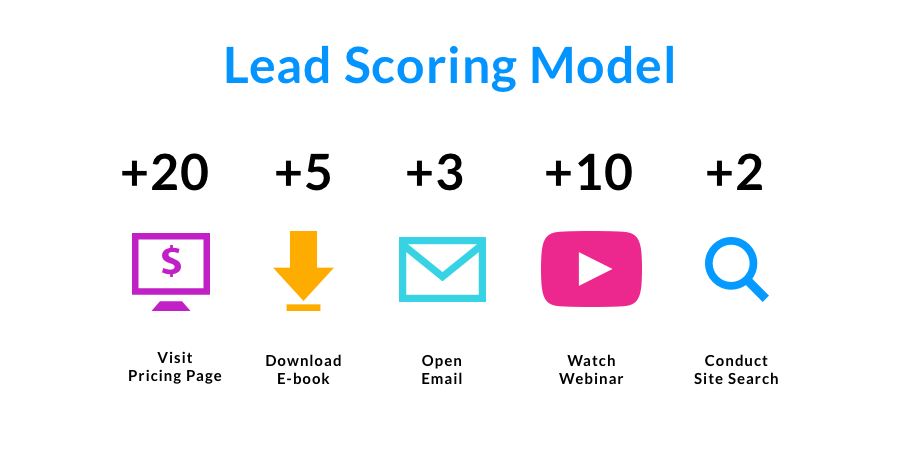
Giving each lead a numerical score helps you determine which are the hottest so you know which ones most deserve your attention, allowing your marketing team to prioritize their outreach. Here’s a super simple example where Lead A has a sizzling engagement score of 100, while Lead B only has a paltry engagement score of 0.
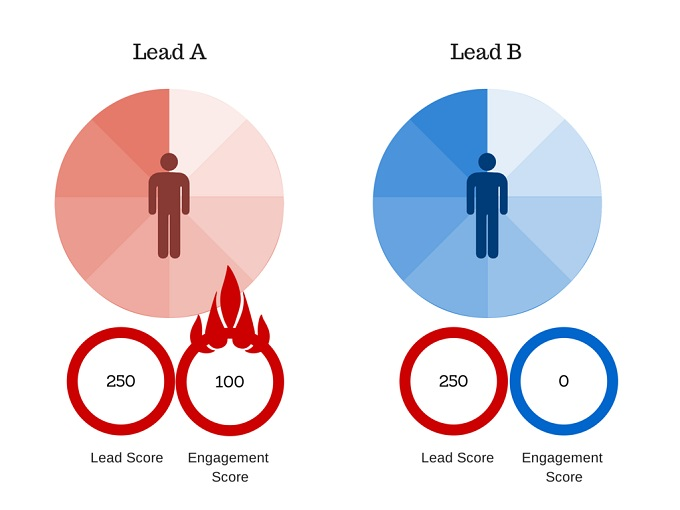
Based on this, your team would clearly want to focus on Lead A because they’re further along in the sales funnel and far more likely to convert than Lead B is.
A good example of a B2B marketing automation platform that offers effective lead scoring is HubSpot. Among their seemingly infinite capabilities, HubSpot’s Predictive Lead Scoring Software grabs data throughout the entire user experience, helping you fine-tune your outreach.
“The HubSpot platform collects all your customer context in one place—from first page viewed to most recent deal closed, and everything in between. With lead scoring, use all that context to reach out to the right people at the right time.”
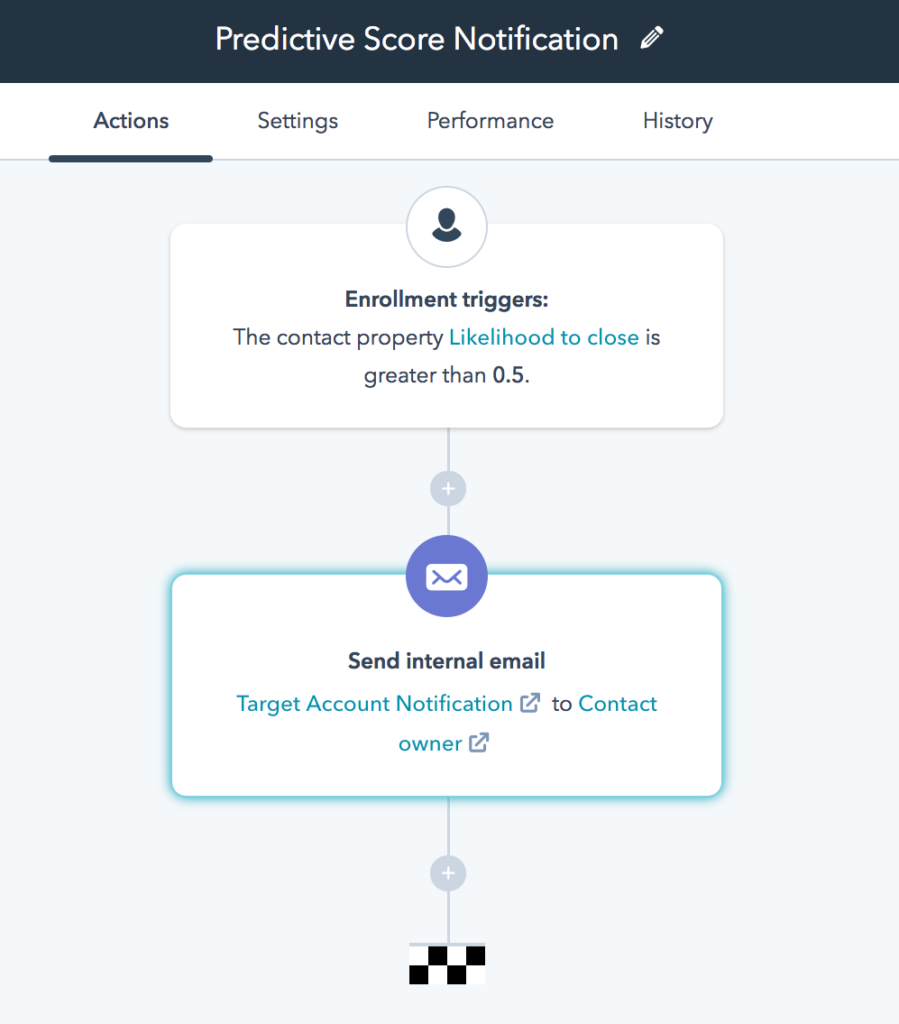
One particular B2B brand that uses HubSpot’s lead scoring software is Intelliflo—a UK-based business management software. So, for example, if a lead visited their website and clicked on “Book a demo” or “Find out more,” or if they downloaded Intelliflo’s eBook, numerical points would be assigned to the lead.
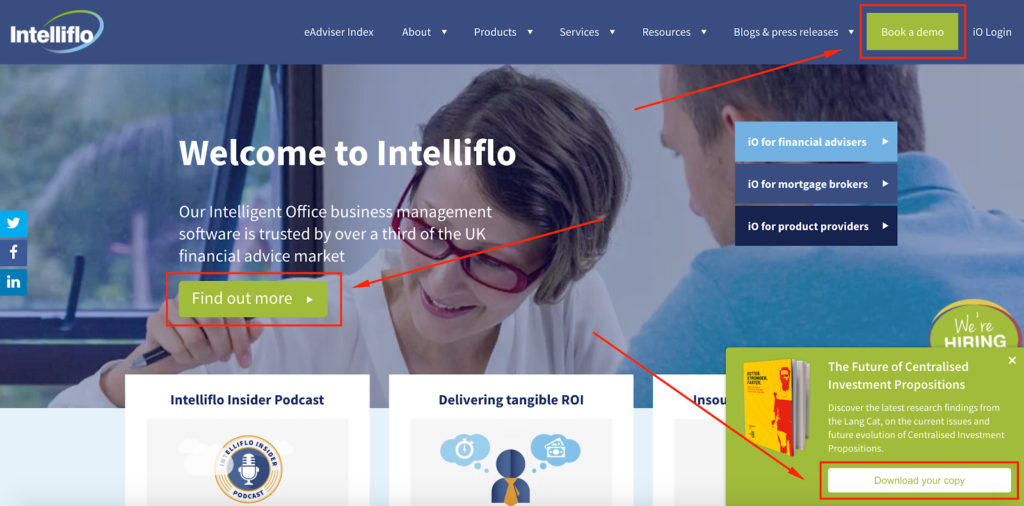
In turn, their marketing team would know who to focus on, where they would take steps to fully nurture the lead (e.g. sending targeted emails).
2. Automated Email Sequences
Speaking of email, nearly 6 out of 10 B2B marketers (59 percent) say it’s their number one channel for generating revenue. But one area where many marketers struggle is following up with leads in a timely manner and getting the right email content to them.
Using automated email sequences is a breakthrough to this problem and allows you to perfect your outreach at scale. Say, for instance, a prospect visits your website and signs up for your newsletter.
A potential email sequence may look something like this.
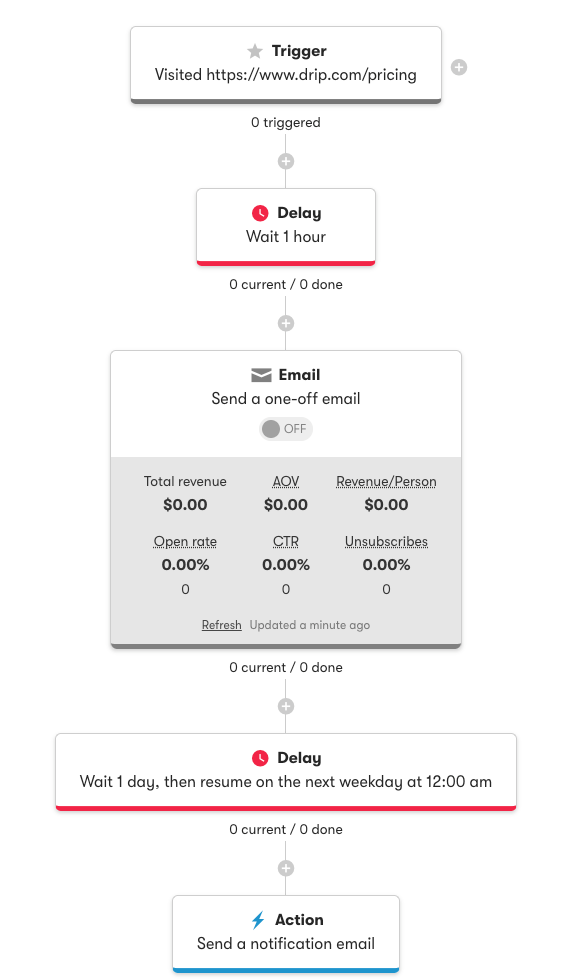 In this example, you would wait for an hour and send them an email asking if they’re interested in learning more. You would then wait a day, and if they reply saying yes, you would hand them off to your sales team.
In this example, you would wait for an hour and send them an email asking if they’re interested in learning more. You would then wait a day, and if they reply saying yes, you would hand them off to your sales team.
If not, you would end the automation. Rather than sending out each email manually and going through the cognitive draining process of trying to get the timing right on your own, automated email sequences allow you to do it automatically.
In turn, you’re able to get the right email content to the right lead at the right time, thus creating a highly personalized experience without spending a ton of time on each lead.
A great example of a company putting automated email sequences to use is cross border e-commerce software company Zonos using Reply.io, a multi-channel sales engagement platform.
Zonos uses Reply.io to “reach out to potential partners at scale” and “systematically keep in touch with their partner network.” More specifically, Zonos uses Reply.io to streamline their outreach, while keeping it ultra-personalized and continually scaling it.
It makes their marketing team’s lives much easier and allows them to proactively contact prospects and channel partners without having to meticulously do manual outreach. Let’s say a lead contacted Zonos through their website.
They would click on “Let’s talk”…
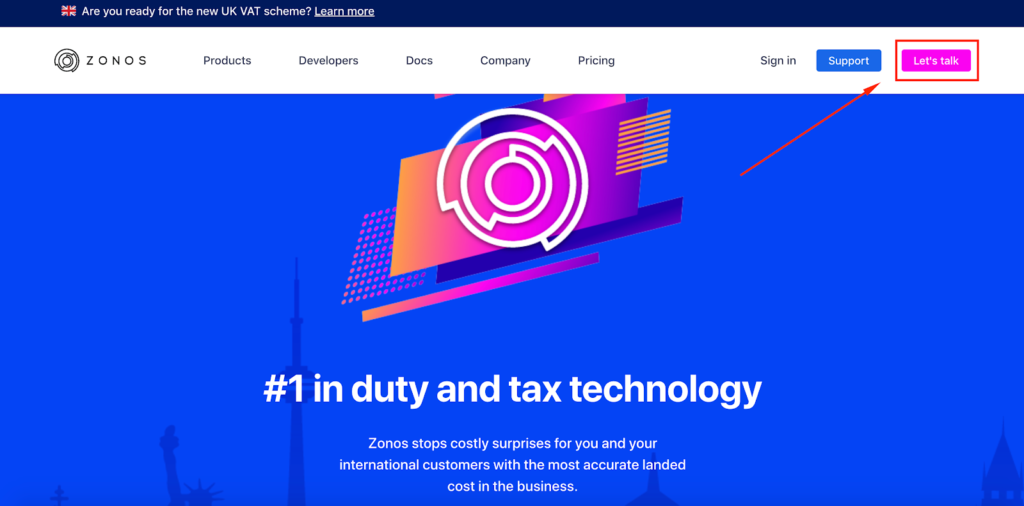
…then shoot Zonos an email.
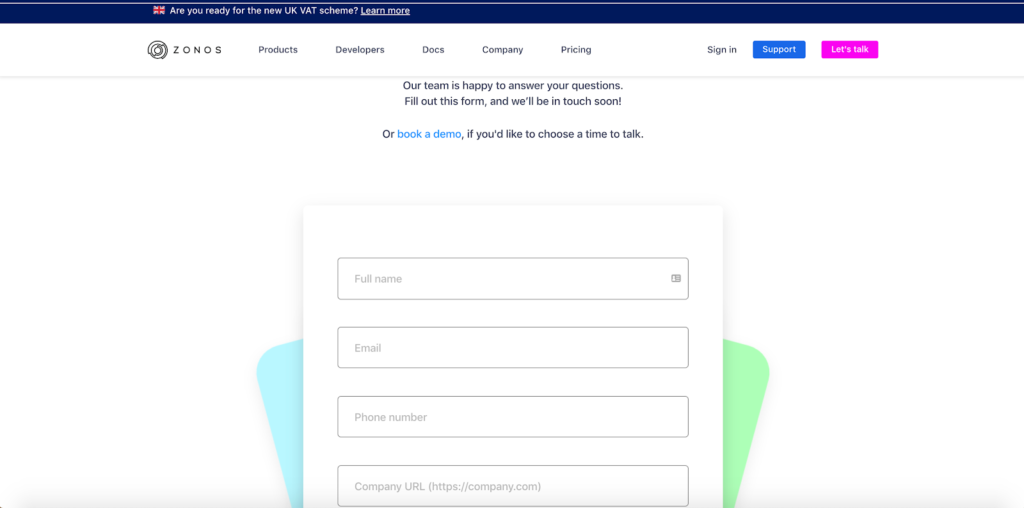
From there, Zonos would initiate an email sequence and nurture leads, ensuring they get the right, personalized content, all while monitoring the performance of their campaign so they can make continual adjustments to optimize it.
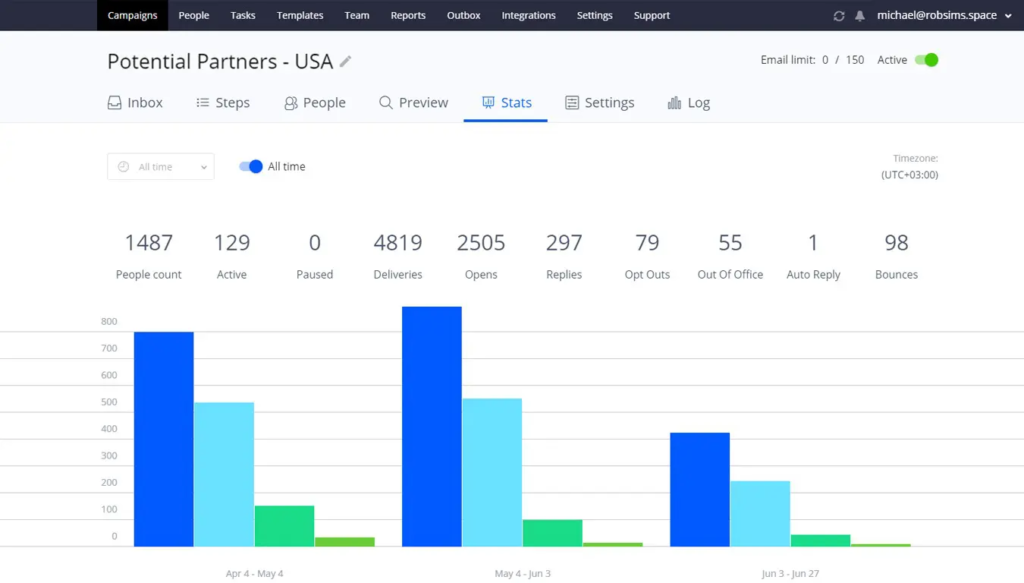
If you’ve ever found your marketing team struggling to keep up with email outreach and have squandered leads because of late follow-ups, this particular B2B marketing automation strategy can be a true godsend.
3. Chatbots for Answering Lead Questions and Directing Them to Relevant Resources
The last few years have marked the rise of chatbots where they’re quickly becoming ubiquitous for B2B brands. According to research from Outgrow, 80 percent of businesses are expected to integrate chatbots in some capacity by the end of 2021. And when used correctly, they can be a massive asset to marketing.
In fact, separate research found that the top 28 percent of companies use chatbots and similar forms of AI in their marketing. One of the most practical ways to leverage the power of chatbots is to use them to answer lead questions and direct them to helpful resources on your website. Rather than having to go through actual people, this approach allows you to give leads the information they need instantly around the clock.
Case in point—omnichannel messaging platform, MobileMonkey. They offer a simple, user-friendly tool that allows B2B companies to create a fully customized chatbot that’s on standby 24/7.
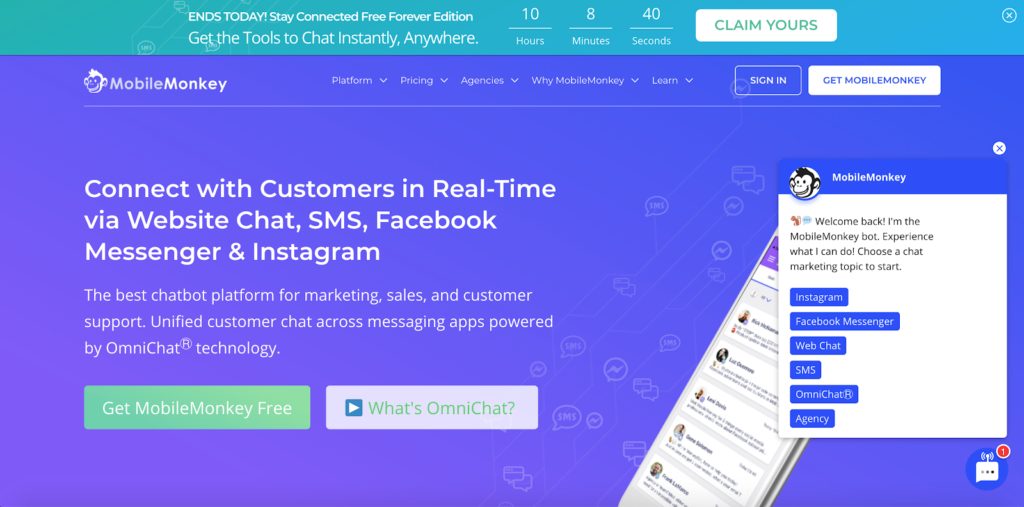
With it you can build a chatbot funnel, enabling you to efficiently answer questions your leads have and route them to the product or information they need.
To illustrate how MobileMonkey works and its capabilities, let’s look at a well-known brand that uses—SEO software platform SEMrush. When visitors land on their website, they see this message box in the bottom right-hand corner.
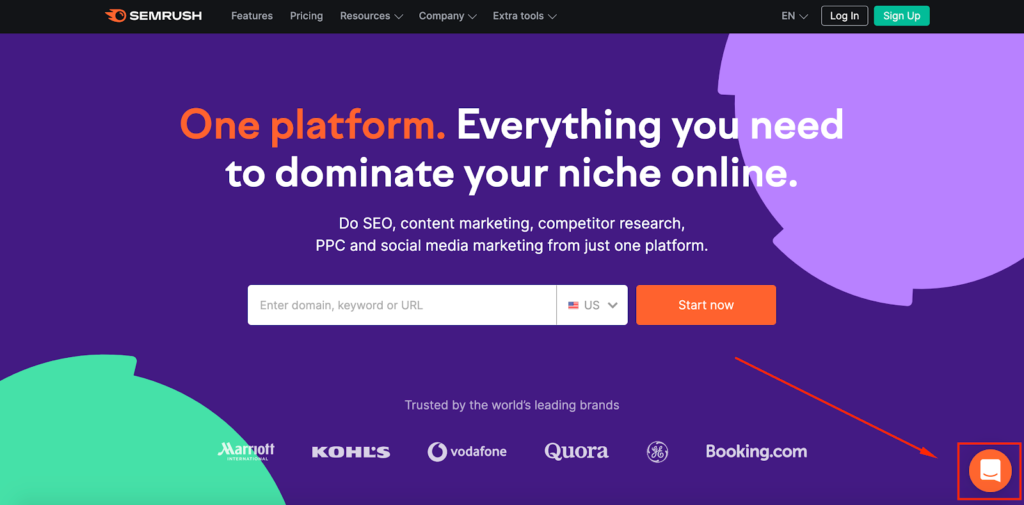
Once they click on it, the chatbot appears, allowing leads to instantly start a conversation.
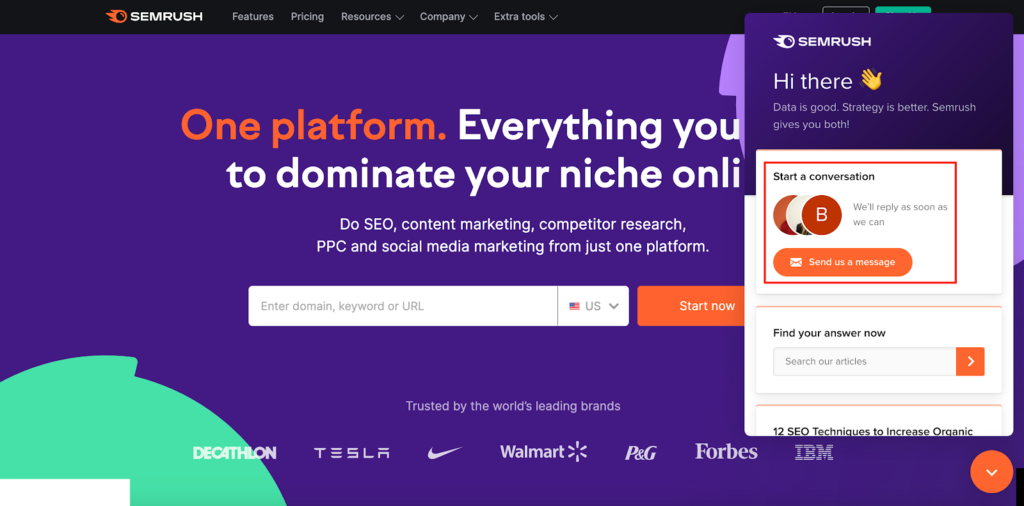
Another cool feature is the search box where leads can quickly search for answers to specific questions they have.
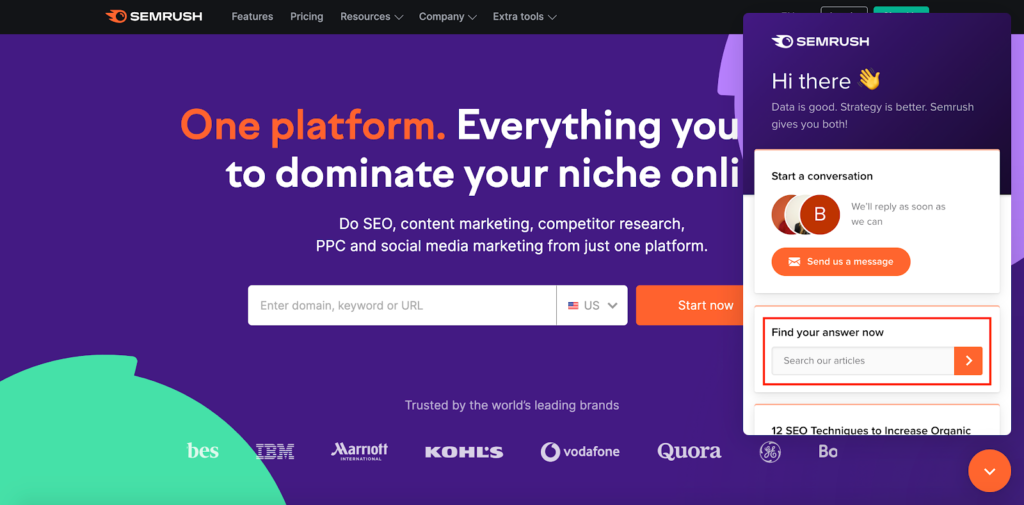
Say someone wants to know how many competitors they can follow on SEMrush. They simply enter that search term…
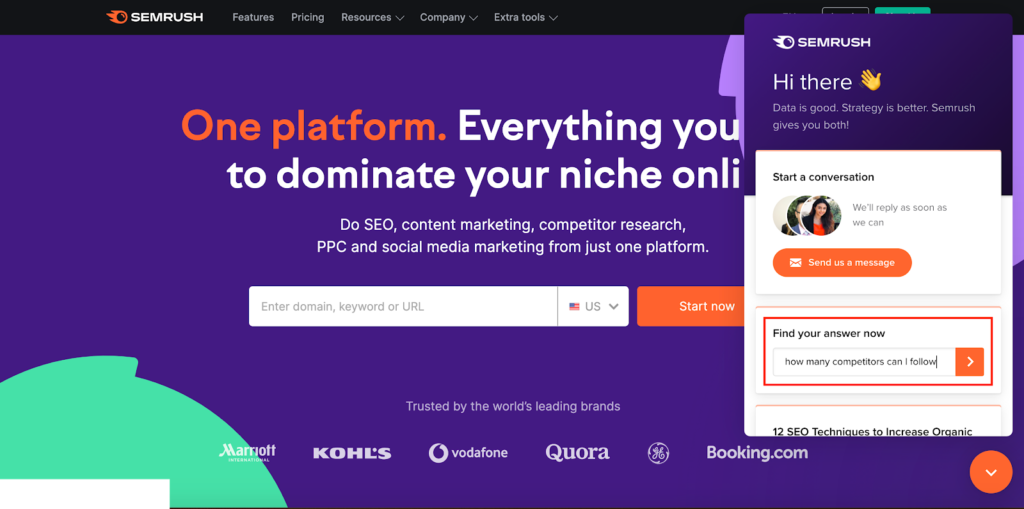
…and the chatbot displays relevant results.
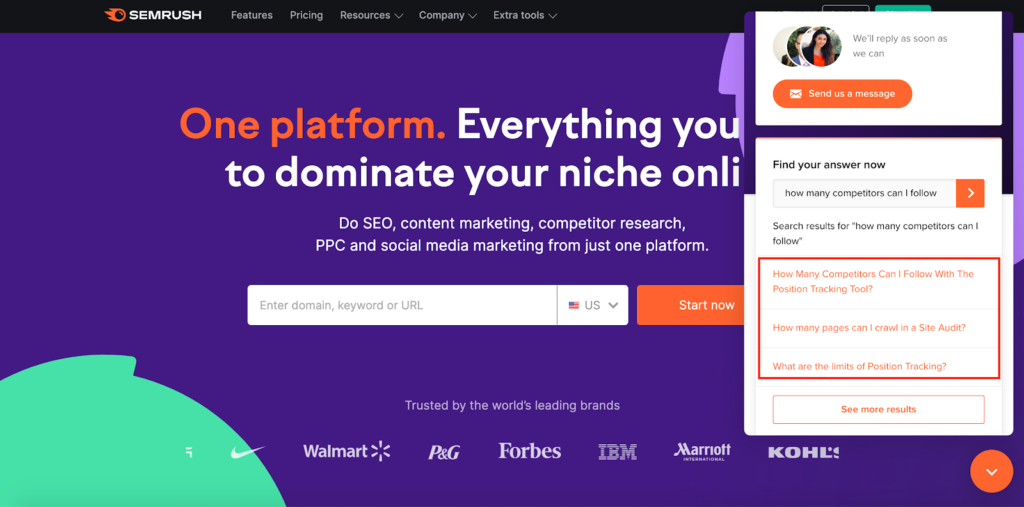
So, if they click on this link…
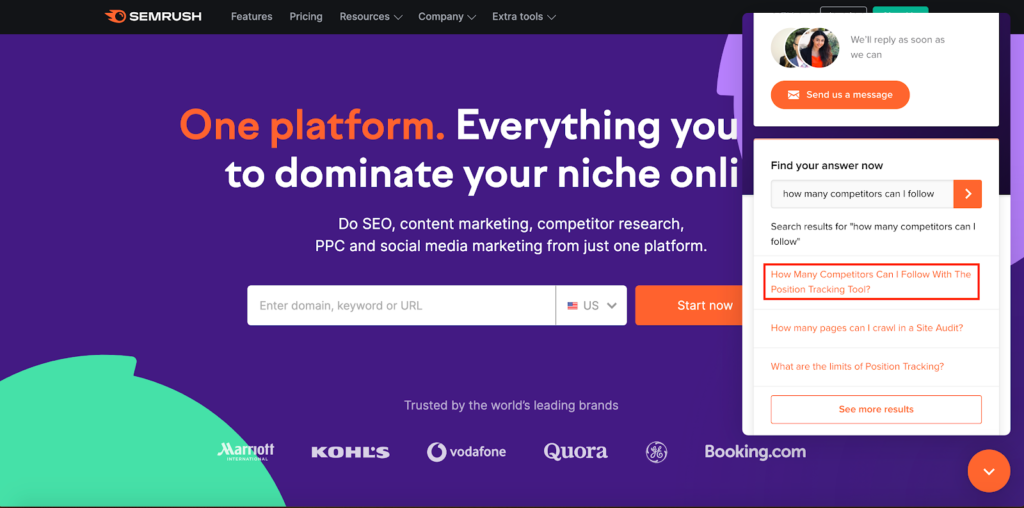
…they instantly get an answer.
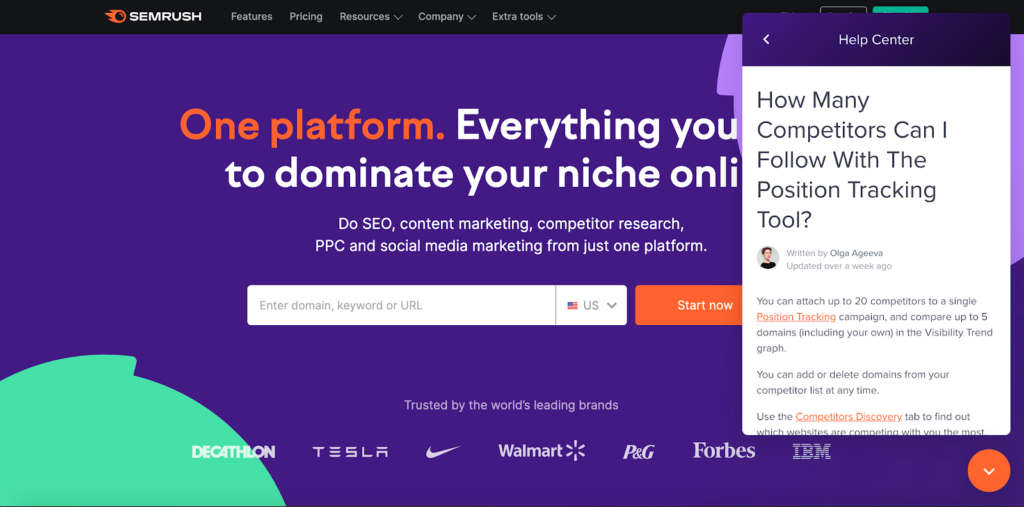
Besides that, SEMrush set up their chatbot to provide leads with quick links to their most helpful articles and to their free online SEO course.
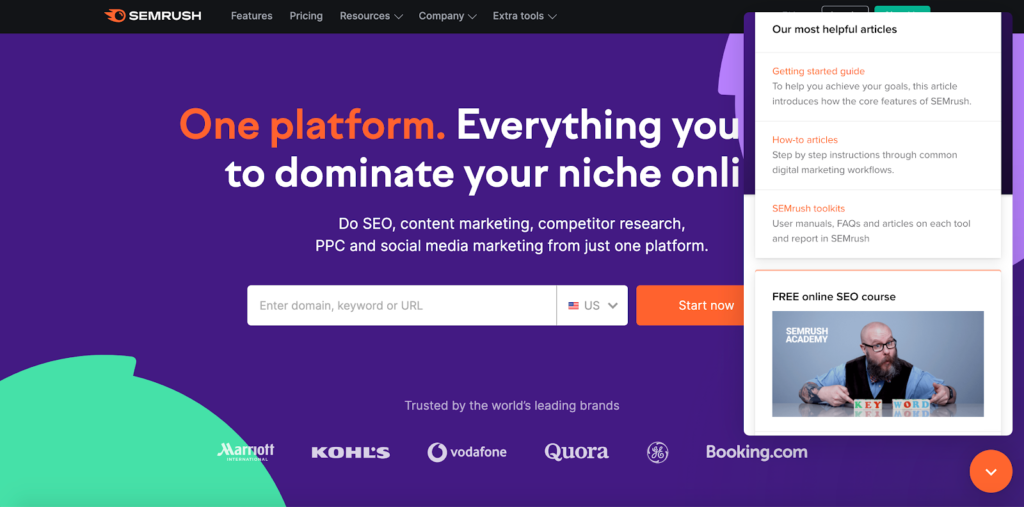
And remember, it’s completely customizable, so you can create whatever type of customer experience you’d like — all while keeping it totally automated.
If you find your team is constantly bombarded with the same questions over and over, building a chatbot like this is an excellent solution to the problem. And with 74 percent of people preferring to use chatbots to find answers to simple questions, it can have a big impact on your customer experience.
4. Self-Nurturing Content
Your average B2B lead will likely spend a significant amount of time researching your product.
After all, if they’re going to make an investment, they usually want to learn as much as possible about you, including your product’s features, benefits, UVP, and so on to ensure they make the right choice.
Besides that, many leads will also want to know more about your industry in general and will look to your content for insights.
One way to facilitate better research and effectively nurture leads while essentially putting the process on autopilot is to create self-nurturing content.
Here’s an example. Hootsuite is one of the top social media management platforms and has a robust content marketing campaign, featuring a blog, webinars, trends analysis, and more.
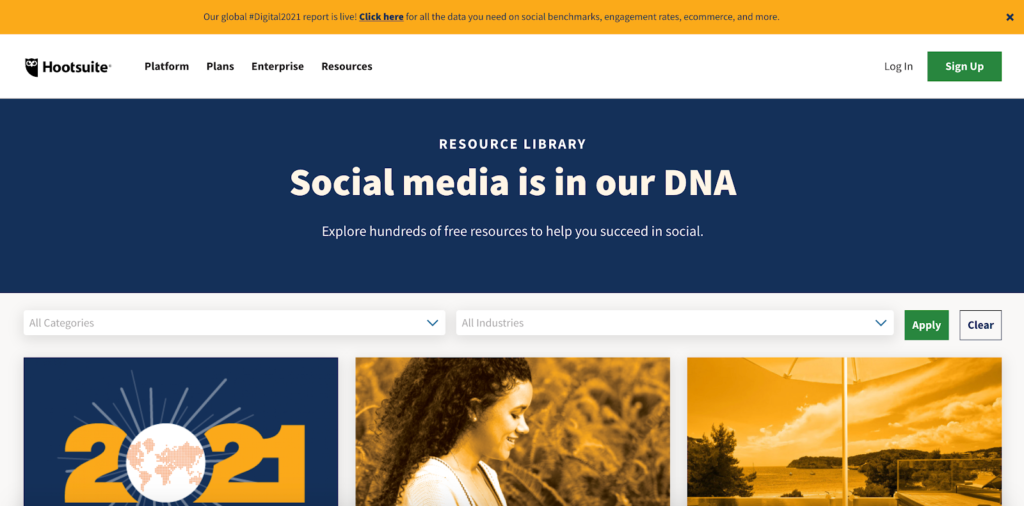
Whenever a lead checks out a piece of content—let’s use this recent report on 2021 Instagram demographics, for example—Hootsuite includes relevant resources at the bottom. So, after reading this report…
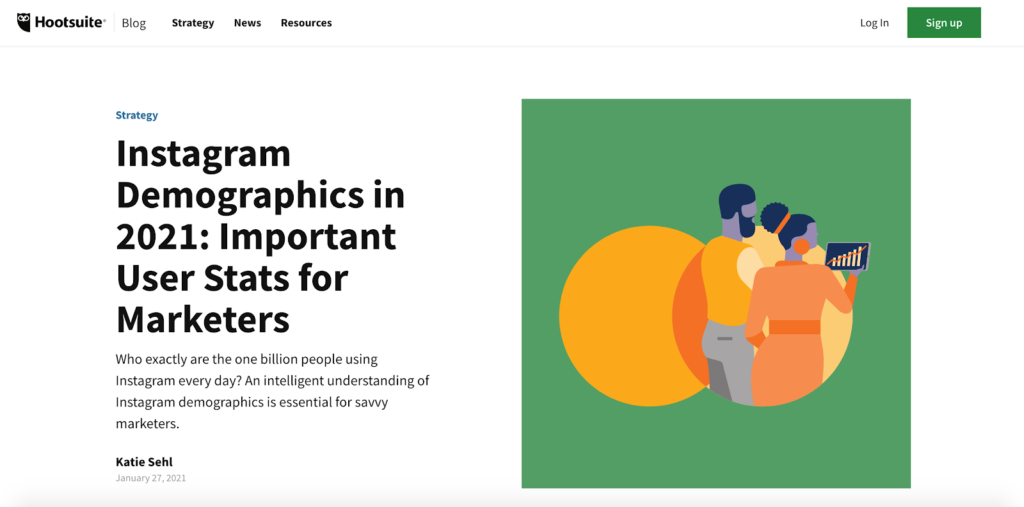
…they see this when they’re done.
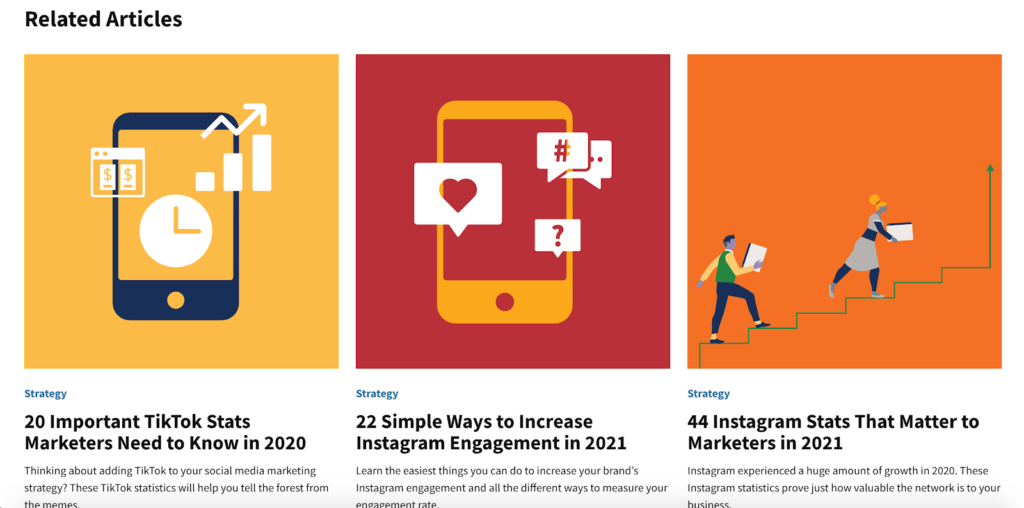
Now, put yourself in the shoes of one of Hootsuite’s leads for a second. They just soaked up a ton of great information on Instagram demographics that have provided insights on the number of users, ages, location, and gender.
Once they reach the bottom of the report, they conveniently find further info on a relevant topic like how they can increase their Instagram engagement.
They then click on this post…
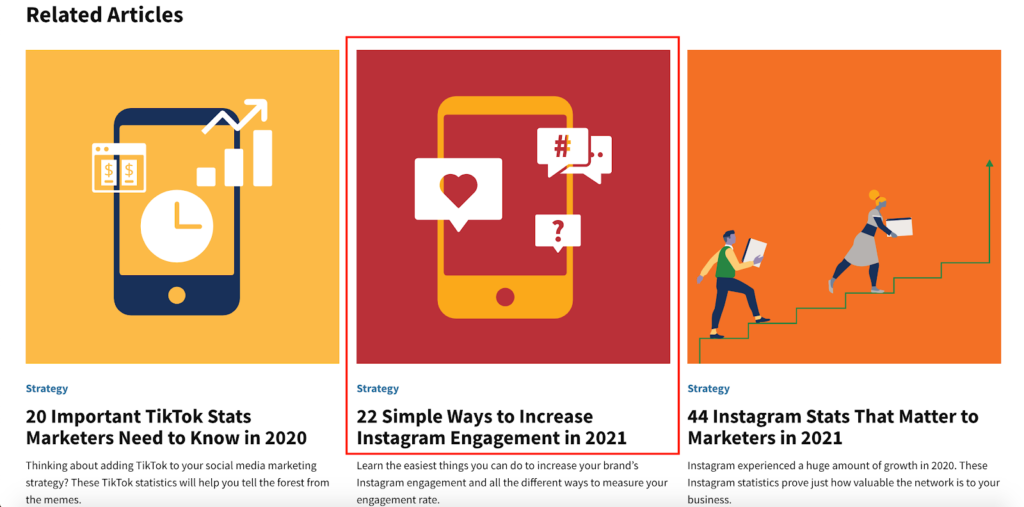
…and can instantly get even more helpful information to guide their campaign.
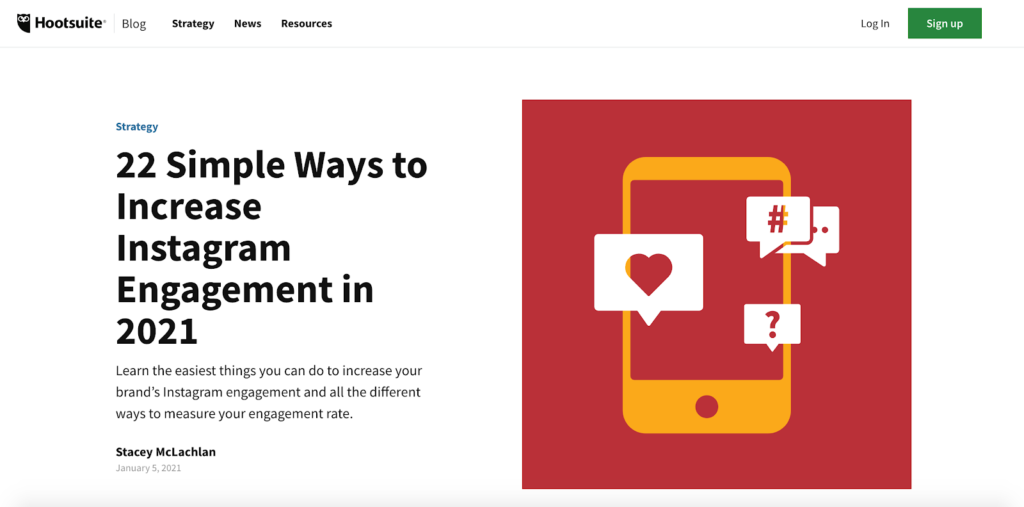
Setting up self-nurturing content like this lets leads perform research and learn at their own pace while providing them with a never-ending stream of personalized content. It’s just like when you find yourself going down the rabbit hole on YouTube or Netflix.
Watching one thing leads you to another, which leads you to another, which leads you to another. This makes it an excellent way to get in more touchpoints with leads, familiarize them with your brand, and build trust—all with zero lifting on your end.
Once you get everything set up, it’s totally automated. So, if you have a sizable archive of content, this is definitely a B2B marketing strategy to capitalize on.
And most platforms have a built-in suggested content feature that makes it easy to get going.
5. Trigger Marketing
The last of the strategies I want to mention is trigger marketing, which HubSpot defines as “the use of marketing automation software to perform a task as a result of an event, often an action taken by a prospect or customer.”
They point out that a “trigger” can essentially be anything you can measure with your CRM, with specific pages viewed, number of pages viewed, and form conversions being just a few examples. The idea here is that you set up your site so that leads are shown relevant content whenever they perform a particular action.
Besides just being something HubSpot discusses in one of their blog posts, trigger marketing is something they legitimately use to create a better, more streamlined marketing funnel. Check out this example. When a lead looks at one of HubSpot’s blog posts on hiring mistakes to avoid, they find helpful, practical information.
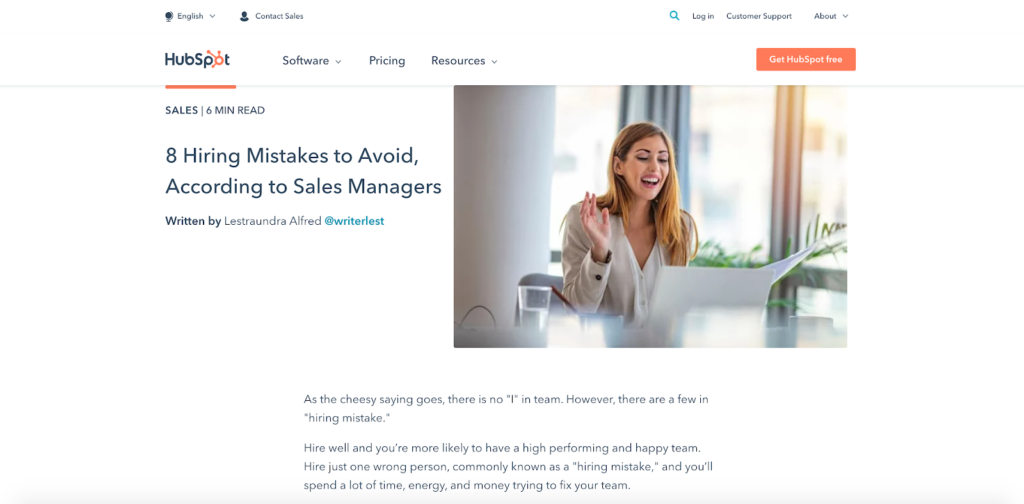
And it also signals to HubSpot that this particular lead is interested in sales, which is important because it helps greatly with segmentation. As the lead scrolls down, this popup box appears in the bottom right-hand corner, letting them know they can download a free sales interview kit.
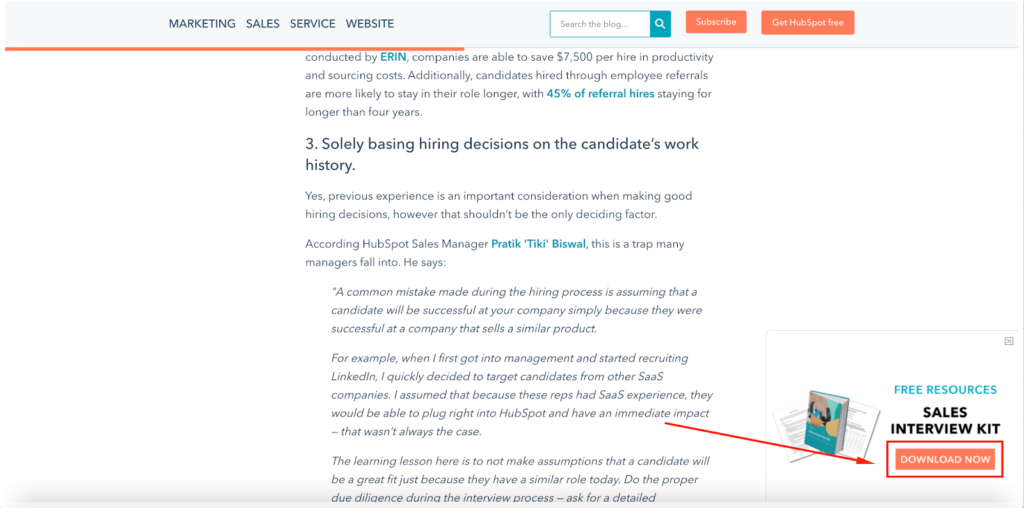
By clicking on the link, the lead is taken to this landing page for the sales interview kit where they can learn more about it and download it.
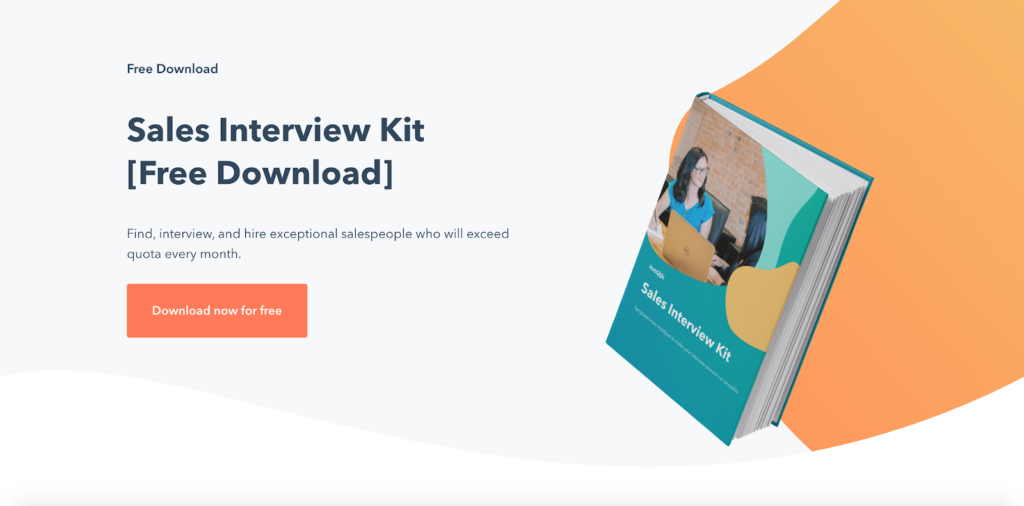
By using trigger marketing like this, HubSpot is able to get hyper-relevant marketing content in front of leads, helping them build trust and inevitably increasing the odds of making a conversion. For a full overview of trigger marketing, I suggest reading this post from HubSpot. It’ll walk you through the process and help you get started.

Conclusion
B2B marketing automation is something I personally find really exciting.
It’s been a real game-changer for many companies, allowing them to accomplish a lot more and provide a better customer experience with very minimal manpower.
To quantify, one study even found that marketing automation led to a 12.2 percent reduction in marketing overhead while creating a 14.5 percent increase in sales productivity. So using it is a no-brainer.
The B2B marketing automation strategies I’ve listed here should give you an idea of some of the possibilities that are out there and will hopefully provide you with some inspiration to help you get started.

